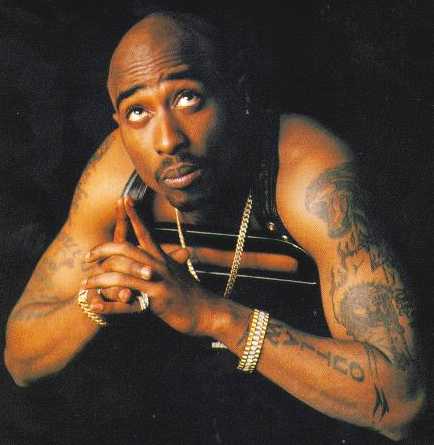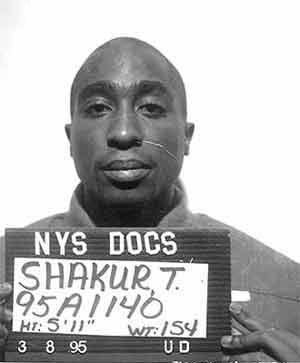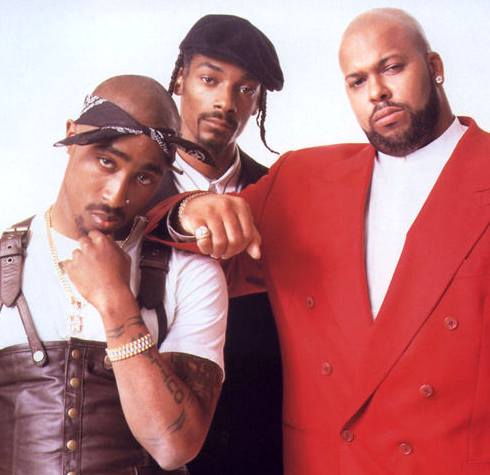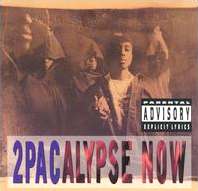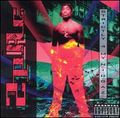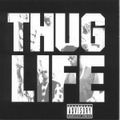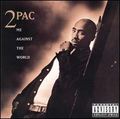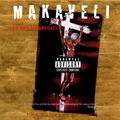|
TUPAC AMARU SHAKUR
|
|||||||||||||||||||||||||||||||||||||||||||||||||||||||||||||||||||||||||||||||||||||||||||||||||||||||||||||||||||||||||||||||||||||||||||||||||||||||||||||||||||||||||||||||||||||||||||||||||||||||||||||||||||||||||||||||||||||||||||||||||||||||||||||||||||||||||||||||||||||||||||||||||||||||||||||||||||||||||||||||||||||||||||||||||||||||||||||||||||||||||||||||||||||||||||||||||||||||||||||||||||||||||||
| HOME | BIOLOGY | BOOKS | FILMS | GEOGRAPHY | HISTORY | INDEX | INVESTORS | MUSIC | NEWS | SOLAR BOATS | SPORT | |||||||||||||||||||||||||||||||||||||||||||||||||||||||||||||||||||||||||||||||||||||||||||||||||||||||||||||||||||||||||||||||||||||||||||||||||||||||||||||||||||||||||||||||||||||||||||||||||||||||||||||||||||||||||||||||||||||||||||||||||||||||||||||||||||||||||||||||||||||||||||||||||||||||||||||||||||||||||||||||||||||||||||||||||||||||||||||||||||||||||||||||||||||||||||||||||||||||||||||||||||||||||||
|
Tupac Amaru Shakur (June 16, 1971 – September 13, 1996), also known by his stage names 2Pac and Makaveli, was an American rap artist, actor, and poet. He is listed in the Guinness Book of World Records as the best-selling rap/hip-hop artist ever, having sold over 73 million albums worldwide, including over 44.5 million sales in the United States alone. Most of Shakur's songs are about growing up around violence and hardship in ghettos, racism, and sometimes his feuds with fellow rappers. Tupac is known for the political, economic, and racial equality messages in a lot of his work. He has been ranked by many fans, critics, and industry insiders as the greatest rapper ever.
2 Pac - Tupac Amaru Shakur
Born in New York City, Tupac frequently found his family changing place of residence. In 1988, his family moved to California, where he would reside for the rest of his life. In 1990 he was hired as a backup dancer for the alternative rap group Digital Underground. Tupac's debut album, 2Pacalypse Now, gained critical recognition and backlash for its controversial lyrics. Shakur became the target of various lawsuits and experienced legal troubles—most notably, he was convicted of sexually assaulting a woman in 1993 (although he vigorously denied the claims). The day before the guilty verdict was issued, Shakur was shot five times in a recording studio lobby in Manhattan. Following the incident, Shakur grew suspicious that other rappers were involved in his shooting; the controversy would help spark the later East Coast-West Coast feud. After serving eleven months of his sentence, Shakur was bailed from prison by Marion "Suge" Knight, the CEO of Death Row Records. In exchange, Shakur would release three records under the label, his fifth, double disc album All Eyez on Me counting as two. On September 7, 1996, Tupac was shot four times in a drive-by shooting in Las Vegas, Nevada. On September 13, 1996, six days after the shooting, Tupac died of respiratory failure and cardiac arrest at the University Medical Center in Las Vegas.
Tupac's music addresses such topics as the hardships of growing up around violence in United States ghettos, poverty, racism, and his feuds with fellow rappers. He is known for the messages of political, economic, and racial equality that pervade his work as well as the "Thug Life" that he raps about living in. His music has attracted a large amount of controversy and was showcased in the media a number of times. He has gained a large amount of publicity for being one of the main figures in the East Coast vs. West Coast feud between his Death Row Records label and Bad Boy Records. During his lifetime, Tupac released five albums and played roles in several films. Many posthumous albums have been released under Shakur's name.
Biography
Early life
Tupac Amaru Shakur was born in the East Harlem section of Manhattan in New York. He was named after Túpac Amaru II, an Incan revolutionary who led a Peruvian uprising against Spain and was subsequently sentenced to death. His last name Shakur comes from the Arabic word thankful (to God). Out of fear of someone hurting her son Afeni Shakur put the name Parish Lesane Crooks on the birth certificate Shakur's mother Afeni was an active member of the Black Panther Party in New York in the late 1960s and early 1970s; Shakur was born just one month after his mother's acquittal on more than 100 charges of "conspiracy against the United States government and New York landmarks" in the "New York Panther 21" court case.
Shakur's godfather, Elmer "Geronimo" Pratt, was convicted of murdering a schoolteacher during a 1968 robbery. His stepfather, Mutulu Shakur, spent four years at large on the FBI's Ten Most Wanted Fugitives list beginning in 1982, when Tupac was a pre-teen. Mutulu was wanted in part for having aided his sister Assata Shakur, Tupac's godmother, to escape from prison in New Jersey, where she had been incarcerated for the murder and wounding of two state troopers in 1973. Mutulu was caught in 1986 and imprisoned after being found guilty of the attempted robbery of a Brinks armored car in which two police officers and a guard were killed. Tupac has a half-sister, Sekyiwa, two years his junior, and an older step-brother, Mopreme "Komani" Shakur, who appeared on many of his recordings.
At age 12, Shakur was enrolled in Harlem's famous "127th Street Ensemble". His first major role with this acting troupe was as Travis in the play A Raisin in the Sun. In 1984, his family relocated to the Roland Park section of Baltimore. After his sophomore year he transferred from Paul Lawrence Dunbar High School to the Baltimore School for the Arts. At the School for the Arts, he studied acting, poetry, and jazz, and performed in Shakespeare plays and landing the role of the Mouse King in The Nutcracker. One friend of Tupac, Dana "Mouse" Smith, was Tupac's beatbox in the many rap competitions that Tupac participated in. Shakur won the majority of the competitions he was in and was considered to be the best rapper in his school.. Despite his lack of trendy clothing he was one of the most popular kids in his school because of his sense of humor and superior rapping skills, he mixed in with all crowds. He also befriended a young Jada Pinkett (later Jada Pinkett Smith). The two developed a close friendship. In one interview that appears on the documentary Tupac: Resurrection, Shakur says, "Jada is my heart. She will be my friend for my whole life." Also in this documentary, Smith calls Shakur "one of my best friends. He was like a brother. It was beyond friendship for us. The type of relationship we had, you only get that once in a lifetime." In Tupac's book, The Rose That Grew From Concrete, there is a poem written by Shakur titled "Jada" including another one titled "The Tears in Cupid's Eyes" which is dedicated to her. The two remained close friends until Shakur's death in 1996.
In June 1988, he and his family moved once again, this time to Marin City, California, where Shakur continued to pursue his career in entertainment. Due to his mother's crack addiction Tupac moved into Leila Steinberg's home with his friend Ray Luv at the age of 17. In 1989 Leila Steinberg organized a concert with Tupac's group, Strictly Dope, the concert lead to him to being signed with Atron Gregory who set him up with Digital Underground. In 1990 he was hired as a back-up dancer and roadie for up-and-coming rap group Digital Underground.
Tupac in a police mugshot (March 8, 1995
Early career
His professional entertainment career began in early 1991, when he debuted his rap skills on the single "Same Song" from the Digital Underground album This is an EP Release. Also in 1991, he appeared in the music video for "Same Song" and made a brief appearance as himself in the movie Nothing But Trouble. In late 1991, after his rap debut, Tupac Shakur performed with Digital Underground again on the album Sons Of The P. Later that year, he released his first solo album, 2Pacalypse Now. Initially he had trouble marketing his solo debut, but Interscope Records executives Ted Field and Tom Whalley eventually agreed to distribute the record.
Shakur claimed his first album was aimed at the problems facing young black males, but it was publicly criticized for its graphic language and images of violence by and against police. In one incident, a young man claimed his killing of a Texas trooper was inspired by the album. Former Vice President Dan Quayle publicly denounced the album as having "no place in our society". 2Pacalypse Now did not do as well on the charts as future albums, spawning no top ten hits, and only being certified gold nearly 4 years later. His second album, Strictly 4 My N.I.G.G.A.Z., was released in 1993. Heavily produced by Stretch and the Live Squad, the album generated two hits, Keep Ya Head Up and I Get Around, the latter featuring guest appearances by other members of the Digital Underground crew. His sophomore album did better than his first, eventually going platinum.
Acting career
In addition to rapping, Shakur began acting in films. His first starring role was in the 1992 movie Juice as Bishop a trigger happy teen, in which he was hailed by Rolling Stone's Peter Travers as "the film's most magnetic figure." He went on to star in Poetic Justice (with Janet Jackson), Above the Rim, Gridlock'd (with Tim Roth), Bullet, and Gang Related. He had also been slated to star in the Hughes brothers' Menace II Society but was replaced by Larenz Tate after assaulting the directors. Director John Singleton claimed that he wrote the film Baby Boy with Shakur in mind for the leading role. It was eventually filmed with Tyrese Gibson in his place and released in 2001, five years after Shakur's death. The movie features a mural of Shakur in the protagonist's bedroom as well as featuring "Hail Mary" in the movie's score.
Thug Life
In late 1993, Shakur formed the group Thug Life with a few of his friends, including Big Syke, Macadoshis, his step-brother Mopreme Shakur, and Rated R. The group released their first and only album Thug Life: Thug Life Vol. 1 on September 24, 1994. The group usually did their concerts without Shakur.
Legal issues
Even as he garnered fame as a rapper and actor, Shakur gained notoriety for his conflicts with the law. On October of 1991 he filed a $10 million lawsuit against the Oakland Police Department, alleging they brutally beat him over a jaywalking incident. The suit was later settled for $42,000.
In October 1993, in Atlanta, Shakur shot two off-duty police officers (one in the leg, one in the buttocks) that were harassing a black motorist. Charges against Shakur were dismissed when it was discovered that both officers were intoxicated and were in possession of stolen weapons from an evidence locker during the incident.
In December 1993, Shakur was charged with sexually abusing a woman in his hotel room. According to the complaint, Shakur sodomized the woman and then encouraged his friends to sexually abuse her. Shakur vehemently denied the charges. He had prior relations days earlier with the woman who was pressing the charges against him. She performed oral sex on him on a club dance floor and the two had later had sex in his hotel room. The allegations were made after she revisited his hotel room for the second time where she engaged in sexual activity with his friends and claimed Tupac's entourage had gang-raped her, saying to him while leaving, "How could you do this to me?" Tupac states he had fallen asleep shortly after she arrived and later awoke to her accusations and legal threats. He later said he felt guilty for leaving her alone, and did not want anyone else to go to jail, but at the same time did not want to go to jail for a crime he didn't commit. Shakur was convicted of "sexual abuse (forcibly touching the buttocks)". There is much controversy to the ruling of the case, the judge said that he did not think Tupac was guilty but sentenced him because of all of Shakur's recent run-ins with the law. There was no semen found at the scene or any evidence this incident occurred. On February 14, 1995, he was sentenced to one and a half years to four and a half years in prison.
In 1994, he was convicted of attacking a former employer while on a music video set. He was sentenced to 15 days in jail with additional days on a highway work crew, community service, and a $2000 fine. In 1995, a wrongful death lawsuit was brought against Shakur in the 1992 shooting of six-year-old Qa'id Walker-Teal of Marin City, California. The child had been the victim of a stray bullet in a shootout between Tupac's entourage and a rival group, though the bullet was not from Tupac's gun. Criminal charges were not sought, and Shakur settled with the family for an amount estimated between $300,000 and $500,000. After serving part of his sentence on the sexual abuse conviction, he was released on bail pending his appeal. On April 5, 1996, a judge sentenced him to serve 120 days in jail for violating terms of probation.
The November 1994 shooting
On the night of November 30, 1994, the day before the verdict in his sexual abuse trial was to be announced, Shakur was shot five times in the lobby of the Quad Recording Studios in Manhattan by two black men in an apparent robbery attempt. He would later accuse Puff Daddy and Notorious B.I.G. — whom he saw after the shooting — of setting him up. According to the doctors at Bellevue Hospital, where he was admitted immediately following the incident, Shakur was shot five times. He checked out of the hospital, against doctor's orders, three hours after surgery. The day following the incident, December 1, 1994, Shakur entered the courthouse in a wheelchair and was found guilty of three counts of sexual abuse, but innocent of six others, including sodomy.
Prison sentence
Shakur began serving his prison sentence at Clinton Correctional Facility in February 1995. Shortly afterwards, he released his multi-platinum album Me Against the World. Shakur is the only artist ever to have an album at number one on the charts while serving a prison sentence. The album debuted at number-one and stayed there for five weeks and first week sales of 240,000 copies which was the record for highest first week sales for a solo male rap artist at the time. He married his long-time girlfriend, Keisha Morris, while serving his sentence. This marriage was later annulled. While in prison Tupac read many books by Niccolo Machiavelli, Sun Tzu's The Art of War and other works of political philosophy and strategy. He also wrote a screenplay titled Live 2 Tell while incarcerated.
In October 1995, Shakur's case got an appeal but due to all of Shakur's legal fees he could not raise the $1.4 million bail. After serving eleven months of his one and a half year to four and a half year sentence, Shakur was released from prison, due in large part to the help and influence of Marion "Suge" Knight, CEO of Death Row Records. Knight posted $1.4 million bail pending appeal of the conviction, in exchange for which Shakur was obligated to release three albums for the Death Row label.
Tupac, Snoop Doggy Dogg, and Suge Knight during Tupac's tenure on Death Row Records 1996
Life on Death Row
After his release from prison, Shakur immediately went back to work recording. He began a new group, The Outlawz, and with them released the notorious "diss" track "Hit 'Em Up", a scathing lyrical attack on the Notorious B.I.G (Christopher Wallace) and others associated with him. In the track, Shakur claims to have had sex with Faith Evans, Wallace's wife at the time, and attacks his street cred. Though there is no hard evidence suggesting that they did, Tupac was convinced that Wallace and Sean "Puffy" Combs had known about the shooting beforehand based on their behavior that night and what his sources told him.
Shakur aligned himself with Death Row Records CEO Suge Knight, who was already bitter toward Combs and his successful Bad Boy label; this added fuel to the building East-West feud. Wallace and Shakur would remain bitter enemies until Shakur's death.
In February 1996, Shakur released his fourth solo album, All Eyez on Me. This double album was the first and second of his three-album commitment to Death Row Records. It sold over 9 million copies. The album was a general departure from the introspective subject matter of Me Against the World, being more oriented toward a thug and gangsta mentality. Shakur continued his recordings despite increasing problems at the Death Row label. Dr. Dre left his post as house producer to form his own label, Aftermath. CEO Suge Knight was under investigation for illegal and unethical activities and business practices. Despite these problems, Shakur produced hundreds of tracks during his time at Death Row, most of which would be released on posthumous albums such as Better Dayz and Until the End of Time. He also began the process of recording an album with the Boot Camp Clik and their label Duck Down Records, both New York-based, entitled One Nation. The goal of this project was to bring closure to the East Coast-West Coast feud by bringing together what Shakur thought were the best rappers from both coasts. This project remains unreleased, though some of Tupac's contributions to the album have been used in various other posthumous releases.
By the end of his life, Tupac was in the middle of starting his film development company Euphanasia, and was going to start writing and directing films. Tupac wanted to host concerts that would be free for students who get a C or above, and wanted to build community centers and start baseball and football leagues for inner-city children. Tupac and Johnny "J" were starting up 24/7 Productions and Tupac was starting up Non-Stop Productions. Thug Passion was a drink that Tupac was planning on bottling and selling; the song "Thug Passion" was made to be a theme song for the drink. Tupac was going to step back from rapping by releasing albums every five years or so on his new record label, Makaveli Records, which would have been distributed by Death Row Records. Tupac and Suge Knight were in the process of expanding Death Row to the East, establishing a Death Row East. Tupac died before this could be fulfilled.
Makaveli
While in prison Tupac read and studied Niccolò Machiavelli (which inspired his later use of the name "Makaveli"). The album The Don Killuminati: The 7 Day Theory, released under Tupac's pseudonym "Makaveli", presents a stark contrast to previous works. In The Don Killuminati: The 7 Day Theory, Tupac continued focusing on the themes of pain and aggression, making this album one of the emotionally darker works of his career. Tupac wrote and recorded all the lyrics in only three days and the production took another four days, combining for a total of seven days to complete the album (hence the name). The album was completely finished before Tupac died and Tupac had complete creative input on the album from the name of the album to the cover which Tupac chose to symbolize how the media has crucified him. The album debuted at #1 and sold 663,000 copies in the first week. Tupac had plans of starting Makaveli Records which would have included the Wu-Tang Clan, The Outlawz, Big Daddy Kane, Big Syke, and Gang starr.
Fatal September 1996 shooting
On September 7, 1996, Shakur attended the Mike Tyson - Bruce Seldon boxing match at the MGM Grand in Las Vegas. After the boxing match, Shakur spotted 21 year-old Orlando "Baby Lane" Anderson, a member of the Southside Crips in the MGM Grand lobby. Shakur rushed him and knocked Anderson down, and Shakur's entourage beat him. The incident was captured on the hotel's video surveillance. Anderson and a group of Crips had beaten up a member of Death Row's entourage in a Foot Locker a few weeks earlier, precipitating Shakur's attack. After the fight with Anderson, Shakur met up with Suge Knight to go to Death Row-owned Club 662 (now known as restaurant/club Seven). Shakur rode with Knight in Knight's 1996 black BMW 750i sedan, as part of a larger convoy of cars including some of Shakur's friends, The Outlawz, and bodyguards.
At approximately 11:14 PM, while stopped at the intersection of East Flamingo Road and Koval Lane, Shakur was shot in a drive-by shooting. Shakur was hit four times, twice in the chest, and once each in his arm and thigh, while Knight was scratched in the head by a piece of flying glass.
At the time of the shooting, Shakur was riding alongside with Suge Knight, with his bodyguard following behind in a vehicle belonging to Kidada Jones, Shakur's then-fiancée. The bodyguard, Frank Alexander, stated that while he was about to ride along with the rapper in Suge Knight's car, Shakur asked him to drive Kidada Jones' car in case they were too drunk and needed additional vehicles from Club 662 back to the hotel. Shortly after the shootings, the bodyguard reported in his documentary, Before I Wake, that one of the convoy's cars drove off after the assailant but he never heard back from the occupants.
After arriving on the scene, police and paramedics took Shakur and Knight to the University Medical Center. Shakur was placed on life support until his death six days later, on September 13, 1996, at 4:03 PM PDT. He was 25 years old. The official cause of death was respiratory failure and cardiac arrest. After his death, Shakur's body was cremated. Family and friends reportedly spread half of his ashes over the Pacific Ocean near Los Angeles, California, and another half in a forest in North Carolina.
The famous photo of Tupac and Suge Knight just moments before shooting
Theories of the crime
Although no one has ever been formally charged, nor publicly identified by the police as a suspect, police sources have indicated they believe that Anderson (who has since been murdered himself) was the killer. Officers in the Compton, California Police Department Gang Unit claimed in a leaked report the Crips were bragging about the killing soon after Anderson returned from Las Vegas. Officers further indicated they were disappointed with the lack of initiative shown by the Las Vegas Metropolitan Police Department in pursuing Shakur's killer(s).
Due largely to the perceived lack of progress on the case by law enforcement, many independent investigations and theories of the crime have emerged. Because of the acrimony between Christopher Wallace (aka The Notorious B.I.G.) and Shakur, there was speculation about the possibility of Wallace's involvement in the murder from the outset. Wallace vehemently denied involvement. However, in a notable (but highly disputed) 2002 investigation by the Los Angeles Times, writer Chuck Phillips claimed to have uncovered evidence implicating Wallace in the murder. In the article, Phillips quoted unnamed gang-member sources who claimed Wallace had ties to the Crips, often hiring them for security during West Coast appearances. Phillips' informants also state that Wallace gave the gang members one of his own guns for use in the attack on Shakur, and that he put out a $1 million contract on Tupac's life. By the time Phillips' specific allegations were published, however, Wallace himself had been murdered.
Wallace's family and associates have vehemently denied Wallace's involvement in Shakur's death. In support of their claims, Wallace's family submitted documentation to MTV indicating that Wallace was working in a New York recording studio the night of Shakur's murder. Wallace's manager Wayne Barrow and rapper James "Lil' Cease" Lloyd made public announcements denying Wallace's involvement in the murder and claiming further that they were both with Wallace in the recording studio the night of the shooting.
The high profile nature of the killing and ensuing gang violence caught the attention of British filmmaker Nick Broomfield who made the documentary Biggie & Tupac, which examines the lack of progress in the case by speaking to those close to Wallace, Shakur, and the investigation. Shakur's close childhood friend and member of the Outlawz, Yafeu "Yaki Kadafi" Fula, was in the convoy when the shooting happened and indicated to police that he might be able to identify the assailants. He was killed shortly thereafter in a housing project in Irvington, New Jersey.
It was believed by many listeners that in the first few seconds of the album The Don Killuminati: The 7 Day Theory, one could hear a voice saying "Suge shot me", or "Suge shot 'em". This voice was of Kadafi. This, along with reports of Knight's strong-arm tactics with artists and other illegal/unethical business tactics including involvement with the Mob Piru Bloods street gang gave rise to a theory that Knight was complicit in Shakur's murder, as it was reported that Suge Knight owed Tupac up to seventeen million dollars in back royalties, but no evidence has been provided to support this theory.
The theory Tupac is not dead!
Other theories have been put forth, including a theory that Shakur is alive and well, but in hiding. Many supporters of these theories point to the symbolism in Shakur's The Don Killuminati: The 7 Day Theory album and in the video for the single "I Ain't Mad at Cha".
Style and influences
Shakur's first album, 2Pacalypse Now, revealed the socially conscious side of Tupac. On this album Shakur attacked social injustice, poverty and police brutality on songs like "Brenda's Got a Baby," "Trapped" and "Part Time Mutha." His style on this album was heavily influenced by the social consciousness and Afrocentrism pervading hip-hop in the late 1980's and early 1990's. On this initial release, Shakur helped extend the legacy of rap groups like Boogie Down Productions, Public Enemy, X-Clan, and even Grandmaster Flash, as he became one of the first major socially conscious rappers from the West Coast.
On his second album, Shakur continued to rap about the social ills facing African-Americans, with songs like "The Streetz R Deathrow" and "Last Wordz." He also showed his compassionate side with the inspirational anthem "Keep Ya Head Up," while simultaneously putting his legendary aggressiveness on display with the title track from the album, Strictly 4 My N.I.G.G.A.Z. He even added a salute to his former group Digital Underground by including them on the playful track "I Get Around." Throughout his career, an increasingly aggressive attitude can be seen pervading Shakur's subsequent albums.
The contradictory themes of social inequality and injustice, unbridled aggression, compassion, playfulness, and hope all continued to shape Shakur's work, as witnessed with the release of his incendiary 1995 album Me Against the World. In 1996 Shakur released All Eyez on Me. With many tracks on the album considered to be classics, including "Ambitionz Az a Ridah", "I Ain't Mad at Cha", "California Love (RMX) [Remix]", "Life Goes On" and "Picture Me Rollin'," many critics consider this album to be a classic.
Shakur's work has influenced many modern rap artists, like Eminem, Nas, Lloyd Banks Ja Rule, The Game, and 50 Cent freely admitted his influence on their work. The likes of Snoop Dogg, P. Diddy, Pharrell, Ghostface Killa, Lil' Jon, Mary J. Blige, Juvenile, Big Boi, Andre 3000, Jermaine Dupri, WC, Sean Paul, Ice Cube, Missy Elliot, Mike Tyson and Nelly have all named songs by Shakur that they personally enjoyed.
Legacy
To preserve Shakur's legacy, his mother founded the Shakur Family Foundation (later re-named the Tupac Amaru Shakur Foundation or TASF) in 1997. The TASF's stated mission is to "provide training and support for students who aspire to enhance their creative talents." The TASF sponsors essay contests, charity events, a performing arts day camp for teenagers and undergraduate scholarships. The Foundation officially opened the Tupac Amaru Shakur Center for the Arts (TASCA) in Stone Mountain, Georgia on June 11, 2005.
On November 14, 2003, a documentary about Shakur entitled Tupac: Resurrection, was released under the supervision of his mother and narrated entirely in his voice. The movie was nominated for "Best Documentary" in the 2005 Academy Awards. Proceeds will go to a charity set up by Afeni Shakur.
On April 17, 2003, Harvard University co-sponsored an academic symposium entitled "All Eyez on Me: Tupac Shakur and the Search for the Modern Folk Hero." The speakers discussed a wide range of topics dealing with Shakur's impact on everything from entertainment to sociology.
Many of the speakers discussed Shakur's status and public persona, including State University of New York English professor Mark Anthony Neal, who gave the talk "Thug Nigga Intellectual: Tupac as Celebrity Gramscian" in which he argued that Shakur was an example of the "organic intellectual" expressing the concerns of a larger group. Professor Neal has also indicated in his writings that the death of Shakur has left a "leadership void amongst hip-hop artists." Neal further describes Tupac as a "walking contradiction", a status that allowed him to "make being an intellectual accessible to ordinary people."
Professor of Communications Murray Forman, of Northeastern University, spoke of the mythical status surrounding Shakur's life and death. He addressed the symbolism and mythology surrounding Shakur's death in his talk entitled "Tupac Shakur: O.G. (Ostensibly Gone)". Among his findings were that Shakur's fans have "succeeded in resurrecting Tupac as an ethereal life force."
In "From Thug Life to Legend: Realization of a Black Folk Hero", Professor of Music at Northeastern University, Emmett Price, compared Shakur's public image to that of the trickster-figures of African-American folklore which gave rise to the urban "bad-man" persona of the post-slavery period. He ultimately described Shakur as a "prolific artist" who was "driven by a terrible sense of urgency" in a quest to "unify mind, body, and spirit."
Michael Dyson, University of Pennsylvania Avalon Professor of Humanities and African American Studies and author of the book Holler If You Hear Me: Searching for Tupac Shakur indicated that Shakur "spoke with brilliance and insight as someone who bears witness to the pain of those who would never have his platform. He told the truth, even as he struggled with the fragments of his identity."
At one Harvard Conference the theme was Shakur's impact on entertainment, race relations, politics and the "hero/martyr".
In the fall semester of 1997, the University of California, Berkeley offered a student-led course entitled "History 98: Poetry and History of Tupac Shakur."
In September 2006, URB magazine published its first fiction piece. Entitled "Tupac Wins!" writer Brandon Perkins celebrated the 10-year anniversary of Tupac's death with the fictional story of Shakur's life since a "failed" assassination attempt, culminating in his victory as mayor of Oakland, CA, and included an "exclusive interview."
In August of 2006 Tupac Shakur Legacy was released. The interactive biography was written by Jamal Joseph. It features unseen family photographs, intimate stories, and over 20 removable reproductions of his handwritten song lyrics, contracts, scripts, poetry, and other personal papers.
Awards
Since his death, Tupac's body of work remains highly regarded by his fans and entertainment industry insiders alike. Here are some of the industry and fan awards Tupac has received for his work:
Discography - AlbumsStudio albums
Discography - Posthumously released
Soundtracks, remixes, poetry, live, and greatest hits albums
Singles
Samples
Filmography
Performances
Documentaries
Poetry books
Radio
LINKS and REFERENCE
APPLE RECORDS | BMG | CBS COLUMBIA | CHRYSALIS | EMI | MOTOWN | PARLOPHONE
RCA | SONY | UNIVERSAL MUSIC GROUP | VIRGIN MUSIC GROUP
WARNER MUSIC GROUP (AOL TIME WARNER)
LINKS:
Solar Cola drinkers care about climate chaos ...
.. Thirst for Life
(330ml Earth can)
|
|||||||||||||||||||||||||||||||||||||||||||||||||||||||||||||||||||||||||||||||||||||||||||||||||||||||||||||||||||||||||||||||||||||||||||||||||||||||||||||||||||||||||||||||||||||||||||||||||||||||||||||||||||||||||||||||||||||||||||||||||||||||||||||||||||||||||||||||||||||||||||||||||||||||||||||||||||||||||||||||||||||||||||||||||||||||||||||||||||||||||||||||||||||||||||||||||||||||||||||||||||||||||||
|
This website is Copyright © 1999 & 2012 NJK. The bird logos and name Solar Navigator are trademarks. All rights reserved. All other trademarks are hereby acknowledged. Max Energy Limited is an educational charity working hard for world peace. |
|||||||||||||||||||||||||||||||||||||||||||||||||||||||||||||||||||||||||||||||||||||||||||||||||||||||||||||||||||||||||||||||||||||||||||||||||||||||||||||||||||||||||||||||||||||||||||||||||||||||||||||||||||||||||||||||||||||||||||||||||||||||||||||||||||||||||||||||||||||||||||||||||||||||||||||||||||||||||||||||||||||||||||||||||||||||||||||||||||||||||||||||||||||||||||||||||||||||||||||||||||||||||||
|
AUTOMOTIVE | BLUEPLANET BE3 | ELECTRIC CARS | ELECTRIC CYCLES | SOLAR CARS | SOLARNAVIGATOR | UTOPIA |
|||||||||||||||||||||||||||||||||||||||||||||||||||||||||||||||||||||||||||||||||||||||||||||||||||||||||||||||||||||||||||||||||||||||||||||||||||||||||||||||||||||||||||||||||||||||||||||||||||||||||||||||||||||||||||||||||||||||||||||||||||||||||||||||||||||||||||||||||||||||||||||||||||||||||||||||||||||||||||||||||||||||||||||||||||||||||||||||||||||||||||||||||||||||||||||||||||||||||||||||||||||||||||
